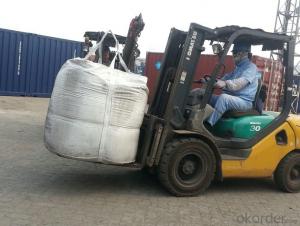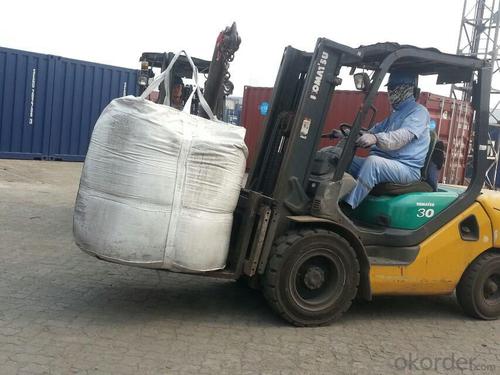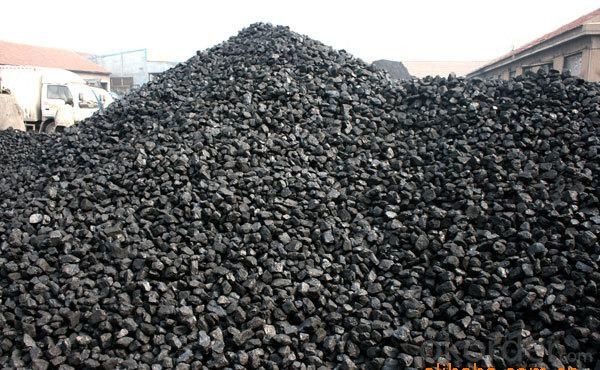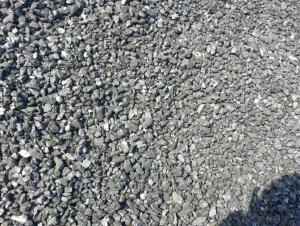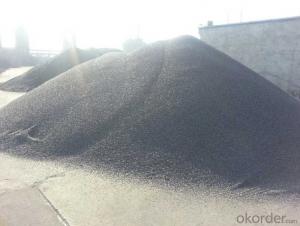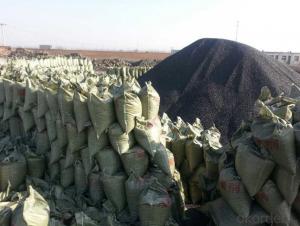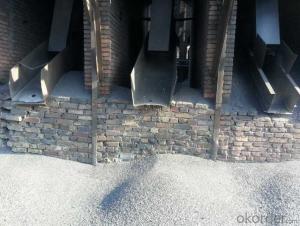Incharge Coke FC90 with Good and Stable Quality
- Loading Port:
- Tianjin
- Payment Terms:
- TT OR LC
- Min Order Qty:
- 20 m.t.
- Supply Capability:
- 5000 m.t./month
OKorder Service Pledge
OKorder Financial Service
You Might Also Like
Incharge Coke FC90 with Good and Stable Quality
Packaging & Delivery
25kgs/50kgs/1ton per bag or as buyer's request
Specifications
Incharge Coke FC90 with Good and Stable Quality
Calcined Anthracite
Fixed carbon: 90%-95%
S: 0.5% max
Size: 0-3. 3-5.3-15 or as request
Incharge Coke FC90 with Good and Stable Quality
It used the high quality anthracite as raw materials through high temperature calcined at over 2000 by the DC electric calciner with results in eliminating the moisture and volatile matter from anthracite efficiently, improving the density and the electric conductivity and strengthening the mechanical strength and anti-oxidation. It has good characteristics with low ash, low resistvity, low sulphur, high carbon and high density. It is the best material for high quality carbon products.
Advantage and competitive of caclined anthracite:
Incharge Coke FC90 with Good and Stable Quality
1. strong supply capability
2. fast transportation
3. lower and reasonable price for your reference
4.low sulphur, low ash
5.fixed carbon:95% -90%
6..sulphur:lower than 0.3%
General Specification of Calcined Anthracite:
Incharge Coke FC90 with Good and Stable Quality
| FC | 95 | 94 | 93 | 92 | 90 |
| ASH | 4 | 5 | 6 | 6.5 | 8.5 |
| V.M. | 1 | 1 | 1 | 1.5 | 1.5 |
| S | 0.3 | 0.3 | 0.3 | 0.35 | 0.35 |
| MOISTURE | 0.5 | 0.5 | 0.5 | 0.5 | 0.5 |
Pictures
Incharge Coke FC90 with Good and Stable Quality
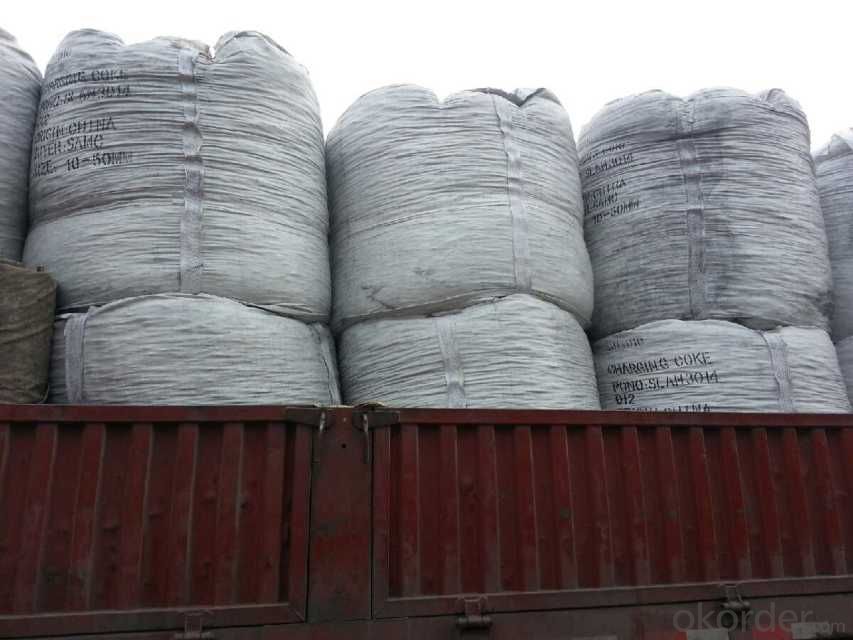
FAQ:
Incharge Coke FC90 with Good and Stable Quality
Why we adopt carbon additive?
Carbon Additives used as additive in steel making process. It made from well-selected Tai Xi anthracite which is low in content of ash, sulphur, phosphorus, high heat productivity, high chemically activation.
Mainly industry property of it is: instead of traditional pertroleum coal of Carbon Additives, reduce the cost of steelmaking.
- Q: What are the impacts of carbon emissions on the stability of savannas?
- Carbon emissions have significant impacts on the stability of savannas, which are delicate and diverse ecosystems. One of the main consequences of carbon emissions is the increase in greenhouse gases, such as carbon dioxide, in the atmosphere. This leads to global warming, which has several direct and indirect effects on savannas. Firstly, higher temperatures resulting from global warming can alter the natural fire regimes in savannas. These ecosystems are adapted to periodic fires, which play a crucial role in maintaining their structure and biodiversity. However, increased temperatures can intensify and prolong fire seasons, leading to more frequent and intense wildfires. This can disrupt the natural balance, causing the loss of vegetation, changes in species composition, and reducing the overall stability of the savanna ecosystem. Secondly, elevated carbon dioxide levels can affect the physiology and growth of plants. While some studies suggest that increased CO2 concentrations may enhance plant productivity in savannas, it is important to consider other factors such as nutrient availability and water availability. If these factors do not keep pace with increased carbon dioxide levels, the positive effects on plant growth may be limited, leading to imbalances in the ecosystem. Furthermore, carbon emissions contribute to climate change, which alters rainfall patterns and distribution. Savannas rely on a delicate balance between wet and dry seasons. Changes in precipitation patterns can disrupt this balance, affecting the availability of water for plants and animals. This can lead to shifts in species distribution, reduced habitat suitability, and increased competition for limited resources, further destabilizing the savanna ecosystem. Lastly, carbon emissions also contribute to ocean acidification, which affects marine ecosystems. Coral reefs, which are interconnected with savannas through coastal regions, provide essential habitat and protection for many marine species. Acidic waters can harm coral reefs, leading to their decline and subsequent loss of biodiversity in savanna ecosystems. In conclusion, carbon emissions have significant impacts on the stability of savannas. Global warming, changes in fire regimes, altered precipitation patterns, and ocean acidification all affect the delicate balance and biodiversity of these ecosystems. It is crucial to address carbon emissions and mitigate their effects to ensure the long-term stability and conservation of savannas and the services they provide.
- Q: How are fossil fuels formed from carbon?
- Fossil fuels are formed from carbon through a natural process that takes millions of years. When plants and organic matter die, they get buried under layers of sediment and undergo decomposition. Over time, intense heat and pressure from the Earth's crust transform this organic matter into fossil fuels such as coal, oil, and natural gas. These fuels contain stored energy in the form of carbon compounds, making them valuable sources of energy when burned.
- Q: How does carbon contribute to air pollution?
- Carbon contributes to air pollution primarily through the emission of carbon dioxide (CO2) and carbon monoxide (CO) into the atmosphere. The burning of fossil fuels, such as coal, oil, and natural gas, releases large amounts of carbon dioxide, a greenhouse gas that contributes to global warming and climate change. This increased level of CO2 in the atmosphere traps heat, leading to the greenhouse effect and subsequent rise in global temperatures. Additionally, incomplete combustion of fossil fuels and biomass can release carbon monoxide, a toxic gas that can have detrimental effects on human health. Carbon monoxide is particularly dangerous as it binds to hemoglobin in the blood, reducing its oxygen-carrying capacity and potentially causing asphyxiation. Furthermore, carbon-containing compounds such as volatile organic compounds (VOCs) contribute to air pollution. VOCs are released from various sources, including industrial processes, vehicle emissions, and the use of solvents in paints and cleaning products. These compounds react with other pollutants in the atmosphere to form ground-level ozone, a major component of smog. Ozone can cause respiratory problems, eye irritation, and other health issues when inhaled. In conclusion, carbon contributes to air pollution through the emission of carbon dioxide, carbon monoxide, and volatile organic compounds. These pollutants have significant impacts on climate change, human health, and the overall quality of the air we breathe. It is crucial to reduce carbon emissions and adopt sustainable practices to mitigate the negative effects of carbon on air pollution.
- Q: Last night to go to the supermarket to buy 5 batteries, see Toshiba carbon batteries, I finally bought the super alkaline batteries, alkaline batteries and carbon is the difference in where? What kind of battery is best for digital cameras? Thank you
- Alkaline battery discharge point, carbon battery's full name should be carbon zinc batteries (because it is the general level is the carbon rod electrode is the zinc skin), also known as zinc manganese battery, is currently the most common dry battery, it has the characteristics of low price and safe and reliable use, environmental factors based on the consideration.
- Q: How does carbon dioxide contribute to global warming?
- The primary cause of global warming is the contribution of carbon dioxide (CO2) through the greenhouse effect. This phenomenon arises when specific gases in the Earth's atmosphere trap solar heat, preventing its escape into space. Although the greenhouse effect is a natural process that aids in preserving the Earth's temperature, human activities, particularly the combustion of fossil fuels, have significantly raised the concentration of CO2 in the atmosphere. When fossil fuels such as coal, oil, and natural gas are burned for energy generation, they release CO2 as a byproduct. This surplus of CO2 functions as a gas that traps heat, absorbing and subsequently emitting heat radiation that would otherwise dissipate into space. Consequently, the Earth's temperature is increasing, resulting in global warming. The repercussions of elevated global temperatures are extensive. They expedite the melting of polar ice caps and glaciers, leading to rising sea levels that jeopardize coastal regions and low-lying islands. Additionally, they disrupt weather patterns, resulting in more frequent and severe occurrences of heatwaves, droughts, hurricanes, and floods. Furthermore, global warming adversely affects ecosystems by causing shifts in habitats, loss of biodiversity, and detrimental impacts on plant and animal species. Reducing carbon dioxide emissions is of utmost importance in mitigating global warming. This objective can be accomplished through diverse approaches, such as transitioning to renewable energy sources, enhancing energy efficiency, investing in sustainable transportation, and implementing practices that foster reforestation and carbon sequestration. By undertaking these measures, we can decelerate the pace of global warming and alleviate its detrimental effects on both the planet and its inhabitants.
- Q: What are the effects of carbon emissions on human respiratory health?
- Carbon emissions can have significant negative effects on human respiratory health. One of the primary components of carbon emissions is carbon dioxide (CO2), which contributes to air pollution and climate change. High levels of carbon dioxide in the atmosphere can lead to an increase in the concentration of other pollutants such as particulate matter, nitrogen oxides, and sulfur dioxide. Exposure to these pollutants, particularly fine particulate matter (PM2.5), has been linked to a range of respiratory problems. Inhalation of PM2.5 can irritate the airways, leading to symptoms such as coughing, wheezing, and shortness of breath. It can also exacerbate existing respiratory conditions such as asthma, chronic obstructive pulmonary disease (COPD), and bronchitis. Long-term exposure to high levels of PM2.5 has been associated with the development of respiratory diseases and can contribute to increased hospital admissions and mortality rates. Furthermore, carbon emissions contribute to the formation of ground-level ozone, a harmful pollutant that is a key component of smog. Ozone can cause inflammation and damage to the respiratory system, leading to respiratory symptoms and reduced lung function. It can also worsen existing respiratory conditions and increase the risk of respiratory infections. In addition to these direct effects, carbon emissions also contribute to climate change, which has indirect impacts on respiratory health. Climate change can lead to increased heatwaves and extreme weather events, which can worsen air quality and trigger respiratory symptoms. It can also impact the distribution of allergens such as pollen, mold spores, and dust mites, increasing the prevalence of respiratory allergies and asthma. Overall, carbon emissions have significant detrimental effects on human respiratory health. They contribute to air pollution, which can cause respiratory symptoms, exacerbate existing respiratory conditions, and increase the risk of developing respiratory diseases. They also contribute to climate change, which indirectly impacts respiratory health through changes in air quality and the prevalence of allergens. Reducing carbon emissions and improving air quality is crucial for protecting and promoting respiratory health.
- Q: What role does carbon play in the carbon cycle?
- The carbon cycle relies heavily on carbon as it circulates through different parts of the Earth. Carbon can be found in both organic and inorganic forms and moves between the atmosphere, oceans, land, and living organisms. This complex cycle involves several interconnected processes, including photosynthesis, respiration, decomposition, and combustion. In the atmosphere, carbon is primarily in the form of carbon dioxide (CO2) gas, which is essential for photosynthesis. During this process, green plants and algae absorb CO2 and convert it into organic compounds like glucose, releasing oxygen as a byproduct. This helps regulate the amount of carbon dioxide in the atmosphere and forms the basis of the food chain. Living organisms break down organic compounds through respiration, releasing energy and producing carbon dioxide as waste. Plants can then immediately reuse this carbon dioxide during photosynthesis, completing the cycle. Additionally, when organisms die, decomposers like bacteria and fungi break down their remains, releasing carbon dioxide back into the atmosphere. The carbon cycle also involves the exchange of carbon with the oceans. Carbon dioxide dissolves in seawater and can be absorbed by marine organisms, such as phytoplankton and corals, during photosynthesis. Over time, the remains of these organisms sink to the ocean floor and can become trapped in sediments, forming fossil fuels like coal, oil, and natural gas. Through geological processes, these fossil fuels can be released back into the atmosphere when burned, contributing to increased carbon dioxide levels. Human activities, like burning fossil fuels and deforestation, have had a significant impact on the carbon cycle. Excessive carbon dioxide emissions from these activities have disrupted the cycle, leading to higher concentrations of carbon dioxide in the atmosphere and contributing to global climate change. In summary, carbon is crucial in the carbon cycle as it is the foundation of life and moves through various parts of the Earth, regulating the climate and supporting life on our planet.
- Q: How is carbon used in the production of paints?
- Carbon is used in the production of paints as a pigment or coloring agent. Carbon black, which is made from the incomplete combustion of petroleum products, is commonly used to provide a deep black color to paints. It is also used in the form of graphite to create black or gray shades. Additionally, carbon-based materials like activated charcoal are used as fillers or extenders in certain types of paints.
- Q: What are the impacts of carbon emissions on the stability of islands?
- The stability of islands is greatly affected by carbon emissions, with significant and wide-ranging impacts. Climate change, which is caused by carbon emissions, leads to various consequences such as sea level rise, increased storm intensity, and ocean acidification. All of these factors pose serious threats to the stability of islands. Sea level rise is an immediate and visible consequence of carbon emissions on islands. As global temperatures rise, glaciers and ice caps melt, and ocean waters expand, the sea levels gradually increase. This rise in sea level puts low-lying islands in danger of being flooded, eroded, or even completely disappearing. In fact, many small islands, especially in the Pacific and Indian Oceans, are already witnessing the effects of rising sea levels, resulting in the loss of land, displacement of populations, and destruction of infrastructure. Another impact of carbon emissions on islands is the heightened intensity and frequency of storms. The warmer ocean temperatures caused by carbon emissions fuel the formation of tropical storms and hurricanes, which can cause devastating damage to island communities. These storms can lead to widespread destruction of homes, infrastructure, and ecosystems, resulting in long-term economic and social disruptions. Islands are particularly vulnerable to storm surges, which occur when strong winds push seawater onto land, causing extensive flooding and erosion. Ocean acidification, which is caused by the excess absorption of carbon dioxide by the ocean, is another significant consequence of carbon emissions on islands. Increased levels of carbon dioxide in the atmosphere lead to increased absorption by the ocean, resulting in a decrease in pH levels and making the ocean more acidic. This acidification poses a threat to coral reefs, which are crucial for island ecosystems and act as natural barriers against wave action and storm surge. Coral reefs provide habitats for a diverse range of marine life and are vital for tourism and local economies. The loss or degradation of coral reefs due to ocean acidification affects not only the biodiversity but also the ability of islands to withstand climate-related impacts. In conclusion, the impacts of carbon emissions on the stability of islands are profound and severe. Rising sea levels, increased storm intensity, and ocean acidification all present significant threats to the physical and social stability of island communities. It is crucial to take urgent action to reduce carbon emissions, invest in adaptation measures, and support island nations in building resilience to these impacts.
Send your message to us
Incharge Coke FC90 with Good and Stable Quality
- Loading Port:
- Tianjin
- Payment Terms:
- TT OR LC
- Min Order Qty:
- 20 m.t.
- Supply Capability:
- 5000 m.t./month
OKorder Service Pledge
OKorder Financial Service
Similar products
Hot products
Hot Searches
